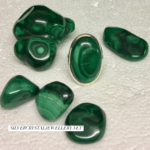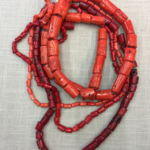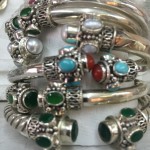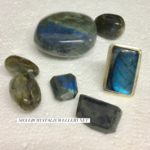Turquoise is a gorgeous gemstone that looks so good in silver turquoise jewelry.
>> See natural turquoise silver jewellery here
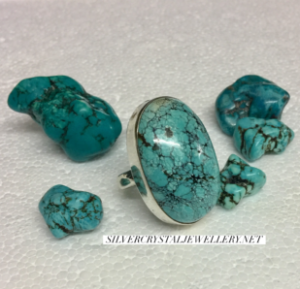 Scientifically it’s a blend of phosphates and aluminum with some traces of copper oxide, from which it gets its blue color, and iron, zinc, calcium and manganese oxide.
Scientifically it’s a blend of phosphates and aluminum with some traces of copper oxide, from which it gets its blue color, and iron, zinc, calcium and manganese oxide.
The green color arises from the iron or aluminum and zinc gives it a yellow color. The most common color is green for turquoise gemstones, and indeed blue gems very often turn green if exposed to sunlight for any length of time.
Different combinations of these elements give turquoise its array of colors, with the most valued being those with an intense blue color and yellow colored gemstones having the lowest value. The finest quality stones, for instance, Persian turquoise, don’t usually fade and keep their gorgeous blue color indefinitely.
Some stones have a major color with a spider web pattern of different colored lines marking the surface. The cause of this is uneven distribution of the various elements present in the precious stone and the marks can be brown, yellow or black in several different patterns. However unmarked gems are more sought after than gems with a spider web matrix although turquoise precious stones of intense blue color, even though they have a spider web matrix, are more sought after than yellow or green pure gemstones. Natural stones of a pure color, i.e. those which are not marked with spider web matrix, are much rarer and are very highly valued.
Turquoise Treatments
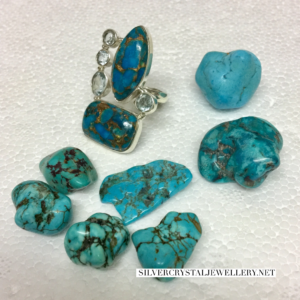 Less than 10% of the turquoise used in jewelry is the naturally occurring, best quality stone. Over 85% is treated from soft, rough turquoise so that it is hard enough to be used. This procedure also improves stability and boosts the gem’s color. Turquoise from some countries, China, for example, is too soft and must be treated. In spite of this, the process yields beautiful gems, which, though less prized than unprocessed stones, nevertheless make superb jewelry.
Less than 10% of the turquoise used in jewelry is the naturally occurring, best quality stone. Over 85% is treated from soft, rough turquoise so that it is hard enough to be used. This procedure also improves stability and boosts the gem’s color. Turquoise from some countries, China, for example, is too soft and must be treated. In spite of this, the process yields beautiful gems, which, though less prized than unprocessed stones, nevertheless make superb jewelry.
Treatments enhance the color of the gemstones as well as making them tougher which gives them a longer life. A treatment method used to boost the color involves injecting a dye in epoxy resin into the gemstone. The color is more stable and will not fade. Turquoise from China is hardened by injecting liquid plastic into the stone. An alternative approach is to inject epoxy resin alone that will stabilise the gem but won’t change the color.
Synthetic turquoise can be made from powdered turquoise in liquid plastic. This kind of turquoise is naturally very cheap. These imitation gems may be sold as natural turquoise and are often waxed or coated in plastic.
Care of Turquoise Gems
Turquoise is porous and soft so must be looked after carefully. It must never be worn when it can become scratched and ought to be protected from any impact always. On no account wear turquoise jewelry when washing the car or gardening! Keep turquoise jewelry in a box that is lined with soft material and do not store with other, harder gems which might damage the stones. Turquoise gems can absorb liquids so keep them away from hot water, oils, chemicals and even perfumes and cosmetics. These may be absorbed by the gem which will become dull and may change color. You can clean turquoise using very mild soapy water and drying carefully with a soft cloth. Ensure it is completely dry before storing it away and on no account use ultrasonic jewelry cleaners as they may cause cracking of the gem.
In Conclusion
Turquoise is a lovely, eye-catching stone which is rare and sought after. Even though there are several disadvantages in that it must be carefully looked after and a number of the blue stones can fade to green over time, it makes fantastic silver turquoise jewelry as the attractive blue color goes perfectly with the silver.
